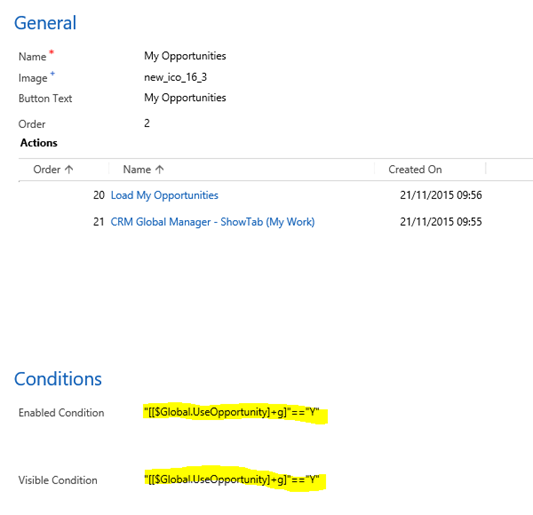I am currently developing a generic interface that will be used by multiple customers all using Unified Service Desk (USD), my application covers all of the standard CRM system entities including account, contact, opportunity, case etc etc.
But not all customers will use all of these feature so I need to turn menu options on/off depending on customer requirements.
For example, if a customer doesn’t use the opportunity entity I want to make the menu option for opportunity disappear. The easy approach would be to simply remove the option from that customers menus but then my application won’t be generic.
So the solution is to use USD options to drive the behaviour of menus etc.
First of all I create an option say “UseOpportunity”. To do this navigate to the options area of Unified Service Desk Settings.

And add a new option, mine looked like this;

Now whenever I have a toolbar button / menu option that uses opportunities, I add a condition to check this option. “[[$Global.UseOpportunity]+g]”==”Y”
See example below;

Hopefully you’ll agree this is a simple approach to allow you to configure how the application behaves without needing to alter code etc.






Leave a comment